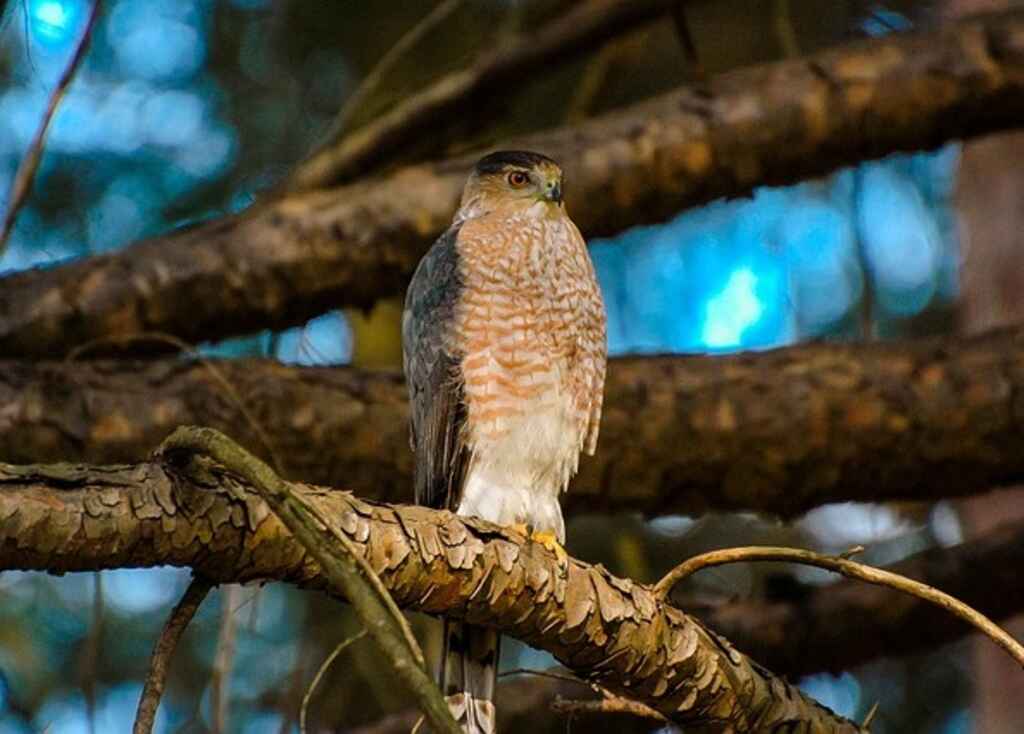Virginia is a birdwatcher’s paradise, offering a diverse range of avian species and breathtaking scenery. From coastal marshes to mountainous regions, the state is home to a wealth of birdwatching destinations that are sure to delight nature enthusiasts.
In this article, we will explore the top birdwatching hotspots in Virginia, highlighting the unique bird species and habitats that make each location special. Whether you’re a seasoned birder or a novice, Virginia’s top birding hotspots are waiting to be discovered.
Table of Contents
- 1 Key Takeaways
- 2 Top Birdwatching Hotspots In Virginia
- 3 Exploring Virginia’s Avian Diversity
- 4 Coastal Gems: Birdwatching Near the Ocean
- 5 Exploring Virginia’s Mountains: Birdwatching in Elevated Beauty
- 6 Wetlands and Marshes: A Haven for Waterbirds
- 7 State Parks: Nature’s Birdwatching Sanctuaries
- 8 Great Dismal Swamp: A Birdwatcher’s Paradise
- 9 Birdwatching Along the Blue Ridge Parkway
- 10 Virginia Birding Trails: Connecting Nature Lovers
- 11 Conclusion
- 12 FAQs: Top Birdwatching Hotspots In Virginia
- 12.1 What are the top birdwatching hotspots in Virginia?
- 12.2 What kind of bird diversity can be found in Virginia?
- 12.3 What are some coastal birdwatching sites in Virginia?
- 12.4 Where can I go birdwatching in Virginia’s mountains?
- 12.5 Are there any wetlands or marshes that are great for birdwatching in Virginia?
- 12.6 Which Virginia state parks are popular among birdwatchers?
- 12.7 What makes the Great Dismal Swamp a birdwatcher’s paradise?
- 12.8 Can I go birdwatching along the Blue Ridge Parkway?
- 12.9 What is the Virginia Birding and Wildlife Trail?
- 12.10 In conclusion, what are Virginia’s top birding hotspots?
- 13 Author
Key Takeaways
- Virginia offers a diverse range of birdwatching destinations.
- Each hotspot is unique and offers the opportunity to observe different bird species and habitats.
- Whether you’re a seasoned birder or a novice, Virginia’s top birding hotspots are waiting to be discovered.
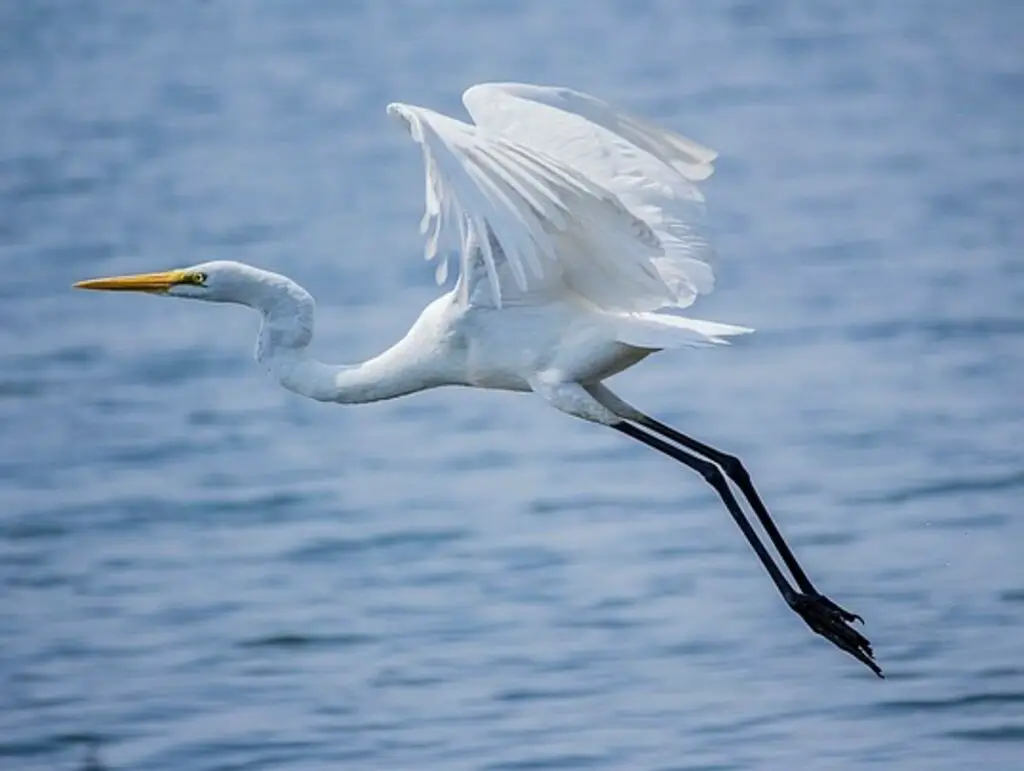
Top Birdwatching Hotspots In Virginia
Virginia is a popular destination for birdwatchers, with a variety of habitats that attract a diverse range of bird species. Some of the top birdwatching hotspots in Virginia include the Shenandoah Valley, the Chesapeake Bay, and the Blue Ridge Mountains.
These areas offer opportunities to spot a wide range of bird species, from raptors and waterfowl to songbirds and migratory species. Whether you’re an experienced birdwatcher or a novice, Virginia’s birdwatching hotspots are sure to provide a memorable experience anytime of the year.
Exploring Virginia’s Avian Diversity
Virginia is known for its diverse avian species, making it a popular destination for birdwatchers from around the world. With over 400 bird species found throughout the state, Virginia offers a unique opportunity to observe a wide range of birdlife in their natural habitats.
The state’s top birding hotspots boast a variety of habitats, from coastal areas and wetlands to mountains and state parks, providing ample opportunities for bird enthusiasts to explore and observe the avian diversity of Virginia.
Exploring Virginia’s Unique Bird Species
One of the main draws of Virginia’s birdwatching hotspots is the unique species found throughout the state. From the endangered Red-cockaded Woodpecker found in the Great Dismal Swamp to the colorful Painted Bunting found along the coast, Virginia offers a diverse range of birdlife to discover.
The state is also home to the largest population of Bald Eagles on the East Coast, making it a premier destination to observe these majestic birds of prey in action.
Virginia’s avian diversity also includes a variety of waterbirds such as Great Blue Herons, Snowy Egrets, and Roseate Spoonbills that can be found in the state’s wetlands and marshes.
Meanwhile, the mountainous regions of the state offer opportunities to observe nesting birds such as the Golden-winged Warbler and Cerulean Warbler, as well as raptors like the Peregrine Falcon and Broad-winged Hawk.
Virginia’s Top Birding Hotspots
With so many unique bird species found throughout Virginia, it can be hard to know where to start when planning a birdwatching trip. Some of the state’s top birding hotspots include:
| Location | Top Bird Species |
|---|---|
| Great Dismal Swamp National Wildlife Refuge | Bald Eagles, Black-throated Green Warblers, Swainson’s Warblers |
| Chincoteague National Wildlife Refuge | Snow Geese, Tundra Swans, Piping Plovers |
| Shenandoah National Park | Cerulean Warblers, Golden-winged Warblers, Peregrine Falcons |
| First Landing State Park | Brown Pelicans, Red-headed Woodpeckers, Blue-gray Gnatcatchers |
| Virginia Beach | Painted Buntings, Northern Gannets, Roseate Spoonbills |
These locations offer a range of habitats, allowing bird enthusiasts to observe a variety of species in their natural environments. Whether exploring coastal areas, wetlands, or mountainous regions, Virginia’s top birding hotspots provide ample opportunities to observe the state’s unique avian diversity.
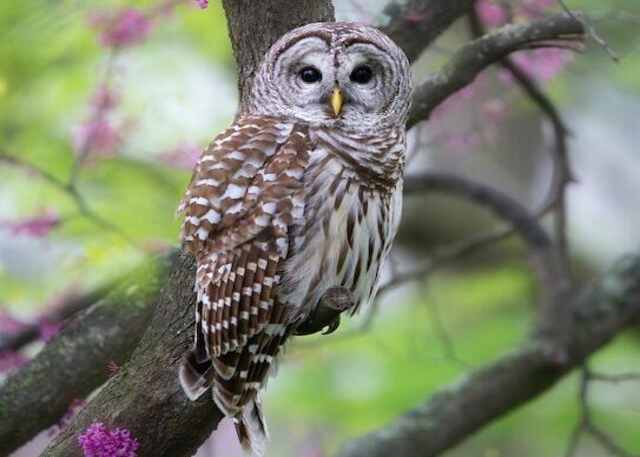
Coastal Gems: Birdwatching Near the Ocean
If you’re a bird enthusiast looking for an unforgettable experience, head to Virginia’s coastline. This region is a premier birding location, with its diverse habitats attracting a wide variety of unique avian species.
One must-visit spot is the Eastern Shore of Virginia National Wildlife Refuge, where over 300 bird species can be observed. The refuge’s diverse habitats, ranging from salt marshes to woodland, provide a haven for migrating species like the American Golden-Plover and the Black-bellied Plover.
Another gem is the Back Bay National Wildlife Refuge, where visitors can witness the migration of over 10,000 snow geese and tundra swans. This refuge is also home to the endangered Piping Plover and the stunning Roseate Spoonbill.
Virginia Beach
Virginia Beach is a great place to start your birdwatching journey along the coast. The city’s parks, beaches, and boardwalk provide ideal locations to spot birds of all kinds. The Pleasure House Point Natural Area and First Landing State Park are two popular spots that offer sightings of species such as the Bald Eagle and the Red Knot.
| Location | Notable Species |
|---|---|
| Pleasure House Point Natural Area | Bald Eagle, Red Knot, American Oystercatcher |
| First Landing State Park | Brown Pelican, Osprey, Willet |
Whether you’re an experienced birder or a beginner, the coast of Virginia is a must-visit destination for any bird enthusiast. With its stunning views and diverse habitats, you’re sure to have an unforgettable birdwatching experience.
Exploring Virginia’s Mountains: Birdwatching in Elevated Beauty
Virginia’s mountainous regions offer some of the most scenic birdwatching spots in the state. With elevations reaching over 5,000 feet, these areas provide a habitat for a diverse range of bird species, some of which cannot be found anywhere else in Virginia. Here are some must-visit birding sites in Virginia’s mountains:
| Location | Featured Species |
|---|---|
| Shenandoah National Park | Blackburnian Warbler, Cerulean Warbler, Blue-headed Vireo, Scarlet Tanager |
| Mount Rogers National Recreation Area | Golden-winged Warbler, Swainson’s Warbler, Red Crossbill, Red-breasted Nuthatch |
Aside from these featured species, Virginia’s mountains are also home to a wide variety of raptors such as Bald Eagles, Peregrine Falcons, and Red-tailed Hawks. Additionally, the forests and streams in these areas provide refuge for woodpeckers, thrushes, and other bird species.
For scenic birdwatching spots in Virginia’s mountain regions, consider taking a hike on one of the many trails in Shenandoah National Park or visiting the Mount Rogers Scenic Byway, a 60-mile drive through the mountains with plenty of opportunities to spot birds along the way.
Wetlands and Marshes: A Haven for Waterbirds
Virginia’s wetlands and marshes are a prime location for birdwatchers, attracting a diverse range of waterbirds. These habitats provide food, shelter, and breeding grounds for many species of ducks, geese, herons, and egrets.
The Great Marsh Trail in Beuna Vista is one of the best places for birdwatching in Virginia. It’s home to an abundance of wildlife, including great blue herons, bald eagles, and wood ducks. Other notable wetlands in Virginia include Back Bay National Wildlife Refuge, Hog Island Wildlife Management Area, and Mason Neck State Park.
| Location | Species |
|---|---|
| Back Bay National Wildlife Refuge | American black ducks, northern pintails, and tundra swans |
| Hog Island Wildlife Management Area | Common loons, ospreys, and double-crested cormorants |
| Mason Neck State Park | Bald eagles, great blue herons, and black-crowned night-herons |
It’s important to note that wetlands and marshes are delicate ecosystems that require protection. Always follow designated trails and avoid disturbing the wildlife or their habitats.
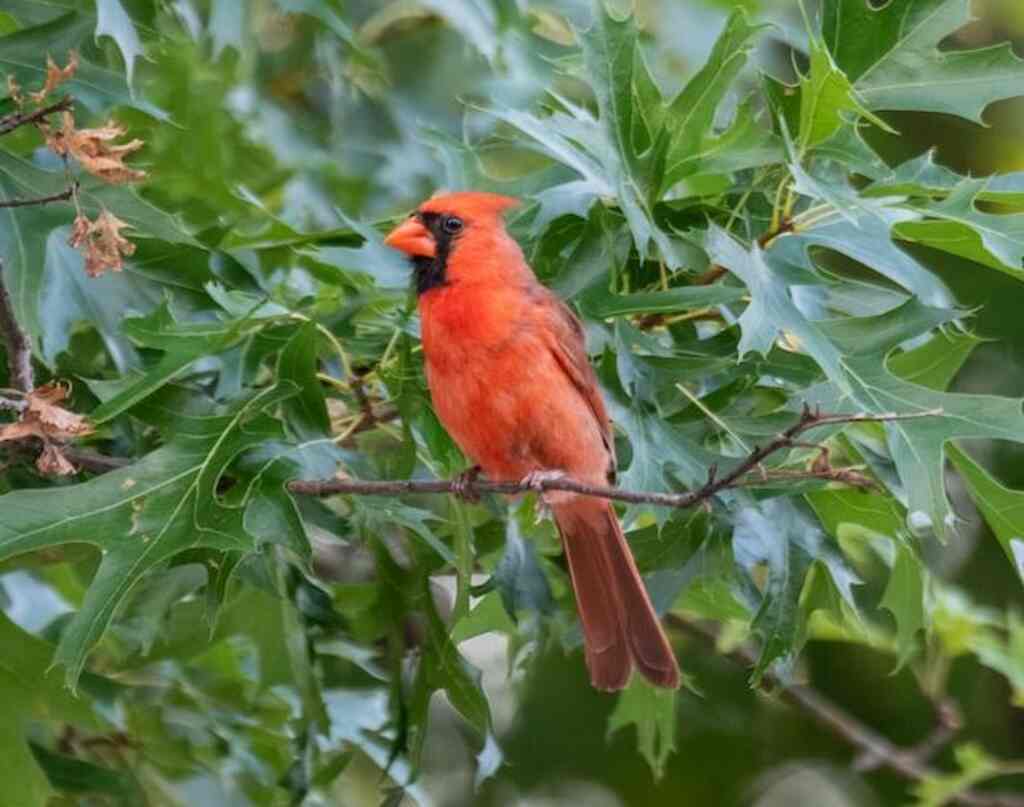
State Parks: Nature’s Birdwatching Sanctuaries
Virginia’s state parks offer a wealth of birdwatching opportunities, with diverse habitats and a wide range of bird species. From the coastline to the mountains, state parks provide a sanctuary for both resident and migratory birds.
One of the most popular state parks for birdwatching is Shenandoah National Park. The park offers over 200,000 acres of protected land, including beautiful mountain vistas and diverse wildlife. Over 200 bird species have been recorded in the park, including the magnificent bald eagle and the cerulean warbler.
| Park Name | Location | Bird Species |
|---|---|---|
| First Landing State Park | Virginia Beach | Bald Eagle, Osprey, Tundra Swan |
| Chippokes Plantation State Park | Surry | Yellow-throated Warbler, Pileated Woodpecker, White-breasted Nuthatch |
| Grayson Highlands State Park | Mouth of Wilson | Peregrine Falcon, Golden-winged Warbler, Blackburnian Warbler |
First Landing State Park, located in Virginia Beach, is another popular spot for birdwatching. The park boasts a diverse ecosystem of beach, dunes, forest, and marsh, providing habitat for over 200 species of birds. Visitors can spot bald eagles, ospreys, and tundra swans, among other bird species.
Chippokes Plantation State Park, situated in Surry, is a historical and ecological gem. Birdwatchers will find a variety of habitats, including hardwood forests, meadows, and wetlands, providing habitat for a wide range of bird species like the yellow-throated warbler, pileated woodpecker, and white-breasted nuthatch.
Grayson Highlands State Park, located in Mouth of Wilson, is famous for its scenic beauty and high-elevation hiking trails. The park is home to species like the peregrine falcon, golden-winged warbler, and Blackburnian warbler, among others.
Visitors can also explore other state parks, such as Kiptopeke State Park, False Cape State Park, and Lake Anna State Park, to observe the diverse bird species that inhabit these areas.
Great Dismal Swamp: A Birdwatcher’s Paradise
The Great Dismal Swamp National Wildlife Refuge, located in southeastern Virginia, is a haven for birdwatchers and nature enthusiasts alike. With an area of over 112,000 acres, the refuge features a diverse ecosystem, ranging from cypress swamps to upland forests.
The Great Dismal Swamp is home to over 200 species of birds, including several rare and endangered species. The Prothonotary Warbler, which nests in the swamp’s wetland habitats, is a favorite among birdwatchers. Other notable species include the Bald Eagle, Red-shouldered Hawk, and Barred Owl.
In addition to birdwatching, the Great Dismal Swamp offers numerous recreational activities, including hiking, biking, and canoeing. The refuge has several trails that are perfect for birdwatching, including the Dismal Swamp Canal Trail and the Jericho Ditch Trail.
“The Great Dismal Swamp is a birder’s paradise. The diversity of bird species and habitats makes it a must-visit destination for any birdwatcher.” – John Smith, avid birdwatcher
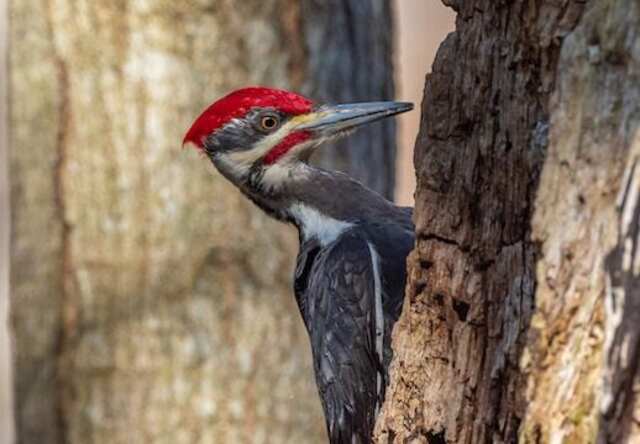
Birdwatching Along the Blue Ridge Parkway
The Blue Ridge Parkway is a scenic road that spans over 450 miles through the mountains of Virginia. In addition to its stunning vistas, it offers ample opportunities for birdwatching. The parkway’s diverse habitats, ranging from grassy meadows to dense forests, provide a home to a variety of avian species.
Exploring the North
The northern section of the Blue Ridge Parkway is home to several high-elevation birdwatching spots. One such location is the Rocky Knob Visitor Center, which offers a panoramic view of the surrounding mountains and is a favorite spot for observing raptors. Another must-visit location is the Mabry Mill, a historic gristmill that features a pond that attracts a range of waterfowl species, including ducks and herons.
Discovering the Central Region
The central region of the Blue Ridge Parkway is known for its rich biodiversity and scenic overlooks. One popular birdwatching spot is the Humpback Rocks Visitor Center, which offers a variety of habitats and is home to species such as warblers, vireos, and thrushes. Another noteworthy location is the James River Visitor Center, which overlooks the James River and is known for its active osprey nest.
Exploring the South
In the southern section of the Blue Ridge Parkway, birdwatchers can enjoy a wide range of habitats, from open fields to oak-hickory forests. At the Peaks of Otter Visitor Center, visitors can observe species such as scarlet tanagers, wood thrushes, and blue-headed vireos. Another popular birdwatching spot is the Apple Orchard Mountain overlook, which offers expansive views of the surrounding landscape and is home to raptors such as golden eagles and peregrine falcons.
Virginia Birding Trails: Connecting Nature Lovers
If you’re looking to explore Virginia’s top birding hotspots, the Virginia Birding and Wildlife Trail is the perfect resource for you. This network of over 65 birdwatching sites, spread across the state, connects bird enthusiasts to the diverse habitats and bird species of Virginia.
The trail is designed to be user-friendly, with signposts and informative brochures available at each location. The trail also offers a mobile app that provides maps, species lists, and other helpful information for birdwatchers on the go.
Exploring the Trail
Each birding site on the trail offers a unique experience, from coastal marshes to mountainous forests. Some of the premier birding locations in Virginia can be found on the trail, such as the Great Dismal Swamp National Wildlife Refuge and the Shenandoah Valley.
Whether you’re a beginner or an experienced birdwatcher, the trail offers something for everyone. The variety of habitats provides opportunities to observe a wide range of bird species, including raptors, waterbirds, songbirds, and more.
Benefits of the Trail
The Virginia Birding and Wildlife Trail not only connects birdwatchers to Virginia’s top birding hotspots but also supports conservation efforts. The trail promotes the importance of protecting the natural habitats that sustain Virginia’s diverse bird populations.
By visiting the trail’s birding sites, bird enthusiasts support ecotourism and local economies while also contributing to the conservation of Virginia’s natural resources. The trail provides a unique opportunity to connect with nature while making a positive impact on the environment.
If you’re planning a birdwatching trip to Virginia, consider exploring the Virginia Birding and Wildlife Trail. With its diverse habitats and premier birding locations, the trail connects nature lovers to the beauty and wonder of Virginia’s avian diversity.
Conclusion
Virginia is a birdwatcher’s paradise, offering a diverse range of avian species in unique habitats throughout the state. From the coastal areas to the mountainous regions, wetlands, and state parks, there are endless opportunities to observe birds in their natural habitat.
Whether you’re a seasoned birdwatcher or a beginner, Virginia’s top birding hotspots are a must-visit. With the Virginia Birding and Wildlife Trail connecting many of these locations, it’s easy to plan a birdwatching trip and explore the state’s natural beauty.
So pack your binoculars and hiking boots and discover the wonders of Virginia’s birdlife. You won’t be disappointed!
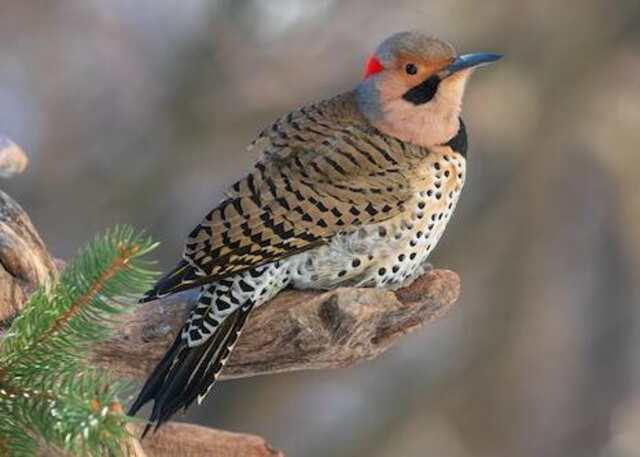
FAQs: Top Birdwatching Hotspots In Virginia
What are the top birdwatching hotspots in Virginia?
Virginia offers a variety of top birdwatching destinations. Some of the best spots include coastal areas, mountainous regions, wetlands, state parks, the Great Dismal Swamp, the Blue Ridge Parkway, and the Virginia Birding and Wildlife Trail.
What kind of bird diversity can be found in Virginia?
Virginia is known for its diverse bird species. The state provides habitats for a wide range of avian creatures, including migratory birds, waterbirds, raptors, songbirds, and more.
What are some coastal birdwatching sites in Virginia?
Virginia’s coastline offers premier birdwatching locations. Some popular spots include the Eastern Shore, Chincoteague National Wildlife Refuge, and the Chesapeake Bay Bridge-Tunnel.
Where can I go birdwatching in Virginia’s mountains?
If you’re interested in birdwatching in the mountains, places like Shenandoah National Park, George Washington National Forest, and Blue Ridge Parkway provide scenic birdwatching spots with an array of species to observe.
Are there any wetlands or marshes that are great for birdwatching in Virginia?
Virginia’s wetlands and marshes are havens for waterbirds. Locations such as Back Bay National Wildlife Refuge, Eastern Shore of Virginia National Wildlife Refuge, and Great Dismal Swamp National Wildlife Refuge offer excellent opportunities for birdwatching.
Which Virginia state parks are popular among birdwatchers?
Birdwatchers often visit state parks such as Shenandoah River State Park, First Landing State Park, and Pocahontas State Park to observe a variety of bird species in their natural habitats.
What makes the Great Dismal Swamp a birdwatcher’s paradise?
The Great Dismal Swamp National Wildlife Refuge is known for its rich bird biodiversity. It provides a unique habitat for various bird species, including the endangered red-cockaded woodpecker and the prothonotary warbler.
Can I go birdwatching along the Blue Ridge Parkway?
Yes, the Blue Ridge Parkway offers fantastic birdwatching opportunities. Along the scenic road, you can spot numerous species, including warblers, tanagers, and hawks.
What is the Virginia Birding and Wildlife Trail?
The Virginia Birding and Wildlife Trail is a network of trails that connects various birdwatching sites across the state. It allows nature lovers to explore different habitats and observe a wide range of bird species.
In conclusion, what are Virginia’s top birding hotspots?
Virginia offers a wealth of top birdwatching hotspots, including coastal areas, mountainous regions, wetlands, state parks, the Great Dismal Swamp, the Blue Ridge Parkway, and the Virginia Birding and Wildlife Trail. These destinations provide ample opportunities to observe a diverse array of bird species in their natural habitats.

